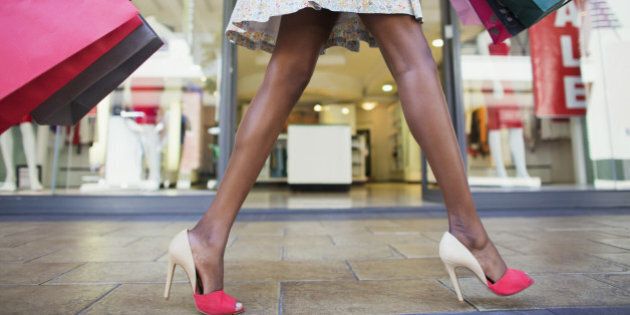
Millennials are arguably the most fashion-conscious of individuals, taking great pride in how they look and dress. When you think of millennials and fashion, the first thing that may come to mind is big brand names. After all, millennials are hard-working, successful individuals who go after what they want and indulging in that high-end designer item may be their way of treating themselves. However, recent findings are proving otherwise. Rather than going after branded clothing, millennials are instead moving towards fast fashion.
Unfamiliar with the term?
Simply put, fast fashion is a term used by fashion retailers to describe designs that move from the catwalk into stores in a quick amount of time in an attempt to capture current fashion trends. It is essentially quick manufacturing of clothes at an affordable price. Millennials love this because it enables them to stay trendy without breaking the bank. Some of the most popular and largest retailers have banked on fast fashion, including H&M, Zara, Forever 21, Topshop, and Canada's own, Joe Fresh, just to name a few. Fast fashion goes beyond simply a term. Taken a few steps further, it actually has a lot to do with how our brains work. Research has shown that the brain finds comfort and pleasure in pursuing inexpensive items, which is something fast fashion retailers may be taking advantage of. It is also popular because it replaces the apparel industry's traditional two-season calendar from twice a year to twice a week, which has proven to have benefits for retailers.
Fast fashion has basically become the best of both worlds when it comes to expanding, re-vamping, or adding to your closet- something millennials do routinely. There's a great appeal to it primarily because it incorporates the latest fashion trends at affordable prices, and secondly because the selection is vast and there's always something new to choose from. Combine those two things together and a millennial is able to constantly spruce up their wardrobe without having to worry how much they've spent to do so. The very concept of fast fashion and its direct ties to millennials has also provoked some arguments that millennials have killed the world of fashion, which is an interesting concept when you look at the thoughts behind it. As this Forbes article points out, fast fashion is completely changing apparel retail.
Whether underemployed, in debt, working two jobs, or holding a job but careful of where their money is spent, millennials are realizing that spending hard-earned money on clothing and accessories isn't a smart move. At the same time, they still want to look and feel good and this is where affordable clothing provides them with exactly what they are looking for. Millennials also pride themselves on their individuality and fast fashion allows them have their own sense of style at affordable price points. This sheds an interesting light on what this means for retailers.
Millennials are essentially having retailers re-think their entire process, everything from merchandising, marketing, e-commerce, dressing rooms, and even their logos. This is also something retailers should take seriously, as millennials are the generation who will directly impact and shape retail in the years to come, if not already. In 25 years, Millennials will hold the majority spending power.
The stats speak for themselves. Millennial shopping habits are proving to be more and more interesting and shocking to some retailers. In a recent study of millennials, findings showed that the top 15 fashion brands are fairly "un-hip," yet millennials are spending their money in these places. Millennials are also notorious for online shopping, another online trend, that's native for this group.
What makes online affordable fashion popular amongst millennials is the fact that online brands know exactly how to appeal to this generation and they are able to connect with millennials in a way that larger retailers simply cannot. Online brands and their success rates without doubt, have a lot to teach large brands. Retailers can also learn a lot by knowing exactly how and why millennials shop. As one Forbes article points out, millennial shopping behaviours include shopping 24/7 but not buying. One study refers to this shopping behaviour as "fauxsumerism".
There is a wonderful book on the science of shopping, called Why We Buy, by Paco Underhill. Being a student of retail my entire career, it was for many years the gospel of understanding the how the shopping experience and communications shaped success. Today, Mr Underhill would have 75 per cent of his book dedicated to behaviour and understanding of online hoabits, because it has literally changed EVERYTHING we knew from a decade or more ago.
With fast fashion on the rise in popularity, especially among millennials, the question for big brands that are losing their consumers to more inexpensive fashion brands is how to better communicate with the millennial generation in order to get them to come back or even come by for the first time.
First things first, big brands need to a different pricing model, offer more choice through merchandising, and replenish stock and introduce items more often. Millennials will not spend more money for one item, when they can get another almost identical for half or even less of the price and then get another 'new' item two weeks later. They're practical like that.
Big brands can also attract millennials by collaborating with the fast fashion brands. Having a certain big brand or designer create a more affordable line outside of their usual fashion line to make it more affordable for the millennial shopper will certainly grab the attention of this generation. Some big brands and designers have already done so through such chains like H&M. Roberto Cavalli, Versace, Jimmy Choo, and Stella McCartney are just some of the big names that have created lines and campaigns for H&M. By doing so, both big name designers and the fast fashion chain have been able to capture and maintain millennial buyers. This is something more retailers ought to keep in mind if they want to attract (and keep) the millennial generation.
Like so many other business models, Millennials have thrown out the rules of retail and are making their own.
ALSO ON HUFFPOST:
